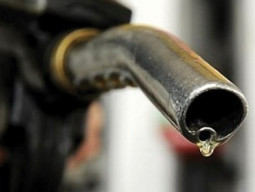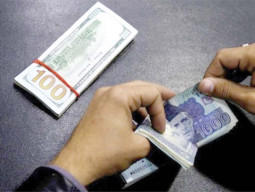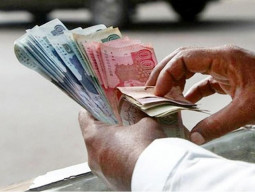
It coincidentally came a day after currency dealers met with Finance Minister Asad Umar. The dealers, who participated in the meeting, strongly denied any connection between the two things - rupee’s weakness and the huddle in Islamabad on Tuesday.
Currency ends with 2.2% gain, closes at Rs125.04 against US dollar
The timing of the meeting, however, remained interesting as the Pakistan Tehreek-e-Insaf (PTI) government has formally invited an International Monetary Fund (IMF) team for discussion in the backdrop of heavy external financing needs and depleting foreign currency reserves of the country, which dropped to $9.88 billion on August 31, providing just one-and-half-month of import cover.
In case a bailout package is agreed between Pakistan and the IMF, the rupee may lose further value against the greenback and other major currencies. Currency dealers were selling the US dollar in the range of Rs125.3-125.5 in the open market. The exchange rate in the inter-bank market remained stable at Rs124.24 against the US dollar, according to the State Bank of Pakistan (SBP).
One of the two major reasons behind the rupee’s weakness is the “rumour that the rupee will further depreciate by 5% (in the inter-bank market),” said Exchange Companies Association of Pakistan (ECAP) General Secretary Zafar Paracha. The rupee has already depreciated a massive 18% in the past nine months in the inter-bank market.
The dollar was available at Rs105.5 in the official market in mid-December 2017. The rupee depreciated around 22% in four rounds to Rs128.17 till July 26, a day after the general elections.
However, the rupee recovered some lost ground in the very first week after elections and remained stable at around Rs123-124.
The open market, however, had started to panic over the unexpected recovery in the rupee in the inter-bank market as people offloaded part of their dollar holdings at open market counters to avoid losses.
Oversupply of the dollar kept the exchange rate unusually lower in the open market than the one in the inter-bank market for several weeks. It mostly remained available in the range of Rs123-124 in the open market against over Rs124 in the inter-bank market.
However, “due to the attractive exchange rate, the rupee lost its value by one rupee in the last three days to Rs125.5 on Wednesday,” said a dealer at Habib Qatar International Exchange in Karachi. “A gradual surge in demand for dollars made it expensive.”
“Apart from the growth in demand, a massive reduction in the supply of dollars to currency dealers played a large role in taking the dollar price up,” the ECAP general secretary said.
Impact of currency depreciation to come with a lag
Pakistan Forex Association President Malik Bostan said re-organisation of the black market and resumption of dollar smuggling in recent weeks caused the reduction in its availability in the market.
Meeting with finance minister
Meeting participants said the finance minister assured them that he would seriously consider their suggestion of cutting the $10,000 limit for individual travellers to half ($5,000) as it was one of the strong channels of dollar leakage.
“Smugglers mostly misuse the travel limit,” a participant said.
The minister assured the currency dealers that the government would activate the law enforcement agencies for a crackdown on smugglers, Hundi and Hawala system operators and the parallel black currency market to block dollar leakage. The dealers suggested a review of the banks’ charges for dollar inflows through worker remittances and called for minimising them to give incentives for higher inflows. “Banks charge up to Rs2 per dollar on remittance inflows,” a participant said.
Published in The Express Tribune, September 13th, 2018.
Like Business on Facebook, follow @TribuneBiz on Twitter to stay informed and join in the conversation.































1714024018-0/ModiLara-(1)1714024018-0-270x192.webp)









COMMENTS (1)
Comments are moderated and generally will be posted if they are on-topic and not abusive.
For more information, please see our Comments FAQ